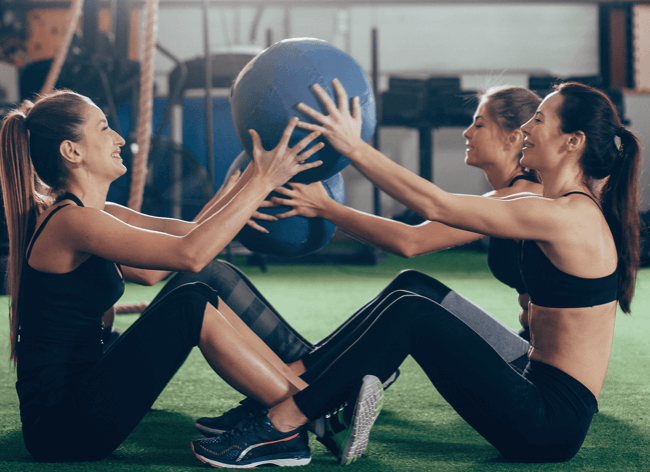One of the most important steps you can take toward avoiding injury at the gym is wearing proper footwear. With fitness classes pushing us to jump higher and run faster, our feet take quite a beating! According to a 2009 Consumer Product Safety Commission, over 1500 Americans go to the emergency room each year due to gym-related injuries—and this number doesn’t account for overuse injuries associated with improper form and repetitive stress to joints.
As you kick your workout routine into high gear this fall, the last thing you need is an injury to slow you down!
So, what is the best shoe gear for the gym? The answer to this question depends on your workout, your fitness level, and your foot type. Below are some basic guidelines for choosing the best shoe gear to help you safely meet your fitness goals.
(On a budget? No problem! Check out Dr. Emily’s Budget Picks at the end of this post.)
Cross-Trainers vs. Running Shoes
Much debate arises over the use of running shoes in group fitness classes. The main difference between cross-trainers and running shoes is their weight and the structure of their soles. Since cross-trainers are meant for a variety of classes, sports, and terrains, this shoe is typically heavier, more supportive, and has a thicker sole. Conversely, running shoes are lighter and may be less supportive— especially for movements in the lateral direction.
If you are taking a typical toning class, a running shoe is sufficient. However, for the higher impact classes such as kickboxing or step, I recommend wearing a more solid shoe, such as a cross-trainer.
Dr Emily’s Picks:
Aetrex Xspress ($99.95)
Mizuno Running Shoes ($99.99-$139.99)
Motion-Controlling vs. Shock-Absorbing
Have you ever gone sneaker shopping and had the sales representative ask you to stand on a plate that will take an impression of your foot? This impression of your foot will help guide the salesperson in finding the perfect shoe for your foot type.
This measuring plate determines whether the arch of your foot is low or high. Generally, low arch foot types need a motion-controlling shoe, while a higher arch foot type needs a shock-absorbing shoe.
Dr Emily’s Picks:
Brooks Trance ($85-$140)
New Balance ($114.99)
Minimalist Movement
For those following the recent barefoot training trend, there may be an interest to try the new minimal-support footwear. Brands such as Nike, Puma, and Vibram have paved the way in creating shoes with soles that are neither shock-absorbing nor motion-controlling.
For any fitness enthusiast who wants to try this shoe type, I recommend building your foot strength first. Our foot contains 19 muscles, which need to slowly build strength and adapt to the demands of a minimalist shoe.
As you feel your foot getting stronger, the minimal shoe is a great choice for strength training, hiking, and running.
Dr Emily’s Picks:
New Balance Minimus ($99)
Nike FREE ($90)
Dr. Emily’s Budget Picks
Reebok Instant ($54.99)
Champion Amp III ($39.99)
























